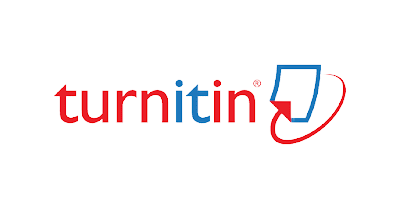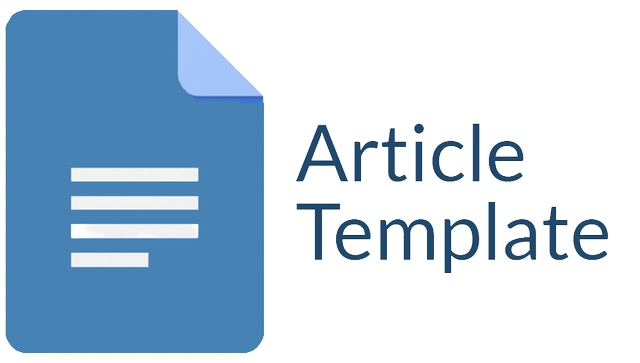STUDENTS' PERCEPTION OF THE ROLE OF YOUTUBE VIDEOS AS A LEARNING SOURCE FOR IMPROVING THEIR VOCABULARY SKILLS IN SENIOR HIGH SCHOOL
Abstract
The selection of appropriate learning media can enhance students' academic performance. YouTube, as the largest video-sharing platform in the world, can serve as an effective alternative learning medium. This research aims to explore students' perceptions of using YouTube as a learning resource to improve English vocabulary skills. Students often feel bored with monotonous teaching methods, making audiovisual media an appealing solution. The study was conducted at a high school in Rogojampi with eleventh-grade students, employing a qualitative descriptive method. Data were collected through questionnaires and interviews to facilitate analysis. The results indicate that students responded positively to the use of YouTube in English learning, particularly in vocabulary enhancement. Students felt more interested and motivated due to the varied and visually engaging educational videos, and they recommended YouTube as a medium for learning English.
Downloads
References
Abbas, A., Gulzar, R., & Hussain, Z. (2019). The impact of social media (Facebook and YouTube) on vocabulary acquisition of ESL learners. Journal of Communication and Cultural Trends, 1(1), 26–44.
Afriani, I. H., Rohmah, S. S., & Pradana, D. A. (2024). Development Of Personalized Learning Management System With Adaptive Features Of Microteaching And Reflective Practice Courses For Preservice Teachers. Journal Santhet. https://ejournal.unibabwi.ac.id/index.php/santhet/article/view/4394
Apriandari, T. (2019). Improving Students‟ English Vocabulary Through The Use of Riddles Techniques. Faculty of Education and Teacher Training Ar- Raniry State Islamic University Banda Aceh.
Ayu, M., & Zuraida, Z. (2019). Enhancing descriptive paragraph writing Of secondary students through shared writing. Journal of Research on Language Education, 1(1).
Creswell, J. W. (2014). Research Design: Qualitative, Quantitative, and Mixed Methods Approaches (4th ed.). Sage Publications.
García Botero, G., Botero Restrepo, M. A., Zhu, C., & Questier, F. (2021). Complementing in-class language learning with voluntary out-of-class MALL. Does training in self-regulation and scaffolding make a difference? Computer Assisted Language Learning, 34(8), 1013–1039. https://doi.org/10.1080/09588221.2019.1650780
Ghozali, M. (2018). Analisis sistem lembaga keuangan syariah Dan lembaga keuangan konvensional. IQTISHODUNA: Jurnal Ekonomi Dan Bisnis Islam, 14(1), 19–21.
Jayanthi, N. S., & Kumar, R. V. (2016). Use of ICT in English language teaching and learning. Journal of English Language Teaching and Learning, 3(2), 34–38.
Kabooha, R., & Elyas, T. (2018). The effects of YouTube in multimedia instruction for vocabulary learning: perceptions of EFL students and teachers. English Language Teaching.
Miles, M. B., & Huberman, A. M. (1984). Analisis data kualitatif (T. R. Rohidi, Trans.). Penerbit Universitas Indonesia.
Moleong, L. J. (2007). Metodologi Penelitian Kualitatif. Edisi Revisi.
Rakes, G. C., Fields, D. A., & Cox, K. (2010). Technology Use and Student Achievement: A Longitudinal Study. Computers & Education, 55(4), 1544– 1555.
Shyamlee, S. D., & Phil, M. (2012). Use of technology in English language teaching and learning: An analysis. International Conference on Language, Medias and Culture, 33(1), 150–156.
Susanthi, I. G. A. A. D. (2020). Kendala dalam Belajar Bahasa Inggris dan Cara Mengatasinya. Linguistic Community Services Journal, 1(2), 64–70. https://doi.org/10.55637/licosjournal.1.2.2658.64-70
Teng, M. F. (2023). The effectiveness of multimedia input on vocabulary learning and retention. Innovation in Language Learning and Teaching, 17(3), 738– 754. https://doi.org/10.1080/17501229.2022.2131791
Warouw, M. (2014). Multi-Ethnic Diversity and ELT Materials Adaptation: Challenges for English Language Teachers in Manado (R. Chowdhury, Ed.).
Zaidi, A., Awaludin, F. A., Karim, R. A., Ghani, N. F., Rani, M. S., & Ibrahim, N. (2018). University students’ perceptions of YouTube usage in (ESL) classrooms. International Journal of Academic Research in Business and Social Sciences, 553(doi:10.6007/IJARBSS/v8), 1 382.
Copyright (c) 2025 Dyah Ayu Febri Ananda, Rizki Nurfida Pambayun, Imro’atul Husna

This work is licensed under a Creative Commons Attribution-ShareAlike 4.0 International License.
Jurnal allows anyone to compose, correct, and do derivative works, even for commercial purposes, as long as they credit for the original work. This license is the freest. It is recommended for maximum distribution and use of licensed material.
The submitted paper is assumed not to contain any proprietary materials that are not protected by patent rights or patent applications; The responsibility for technical content and protection of proprietary materials rests with the authors and their organizations and not the responsibility of journal or its editorial staff. The primary (first/appropriate) author is responsible for ensuring that the article has been viewed and approved by all other authors. The author's responsibility is to obtain all necessary copyright waivers to use any copyrighted material in the manuscript before submission.
Jurnal Pendidikan, Sains dan Teknologi allows the author(s) to hold the copyright without restrictions and allow the author(s) to retain publishing rights without restrictions. Jurnal Pendidikan, Sains dan Teknologi CC-BY-SA or an equivalent license as the optimal license for the publication, distribution, use, and reuse of scholarly work. Jurnal Pendidikan, Sains dan Teknologi allows the author(s) to hold the copyright without restrictions and allow the author(s) to retain publishing rights without restrictions. Jurnal Pendidikan, Sains dan Teknologi CC-BY-SA or an equivalent license as the optimal license for the publication, distribution, use, and reuse of scholarly work.
In developing strategy and setting priorities Jurnal Pendidikan, Sains dan Teknologi recognize that free access is better than priced access, libre access is better than free access, and libre under CC-BY-SA or the equivalent is better than libre under more restrictive open licenses. We should achieve what we can when we can. We should not delay achieving free in order to achieve libre, and we should not stop with free when we can achieve libre.
Jurnal Pendidikan, Sains dan Teknologi is licensed under a Creative Commons Attribution-ShareAlike 4.0 International License.
You are free to:
- Share a copy and redistribute the material in any medium or format
- Adapt a remix, transform, and build upon the material for any purpose, even commercially.
- The licensor cannot revoke these freedoms as long as you follow the license terms.






